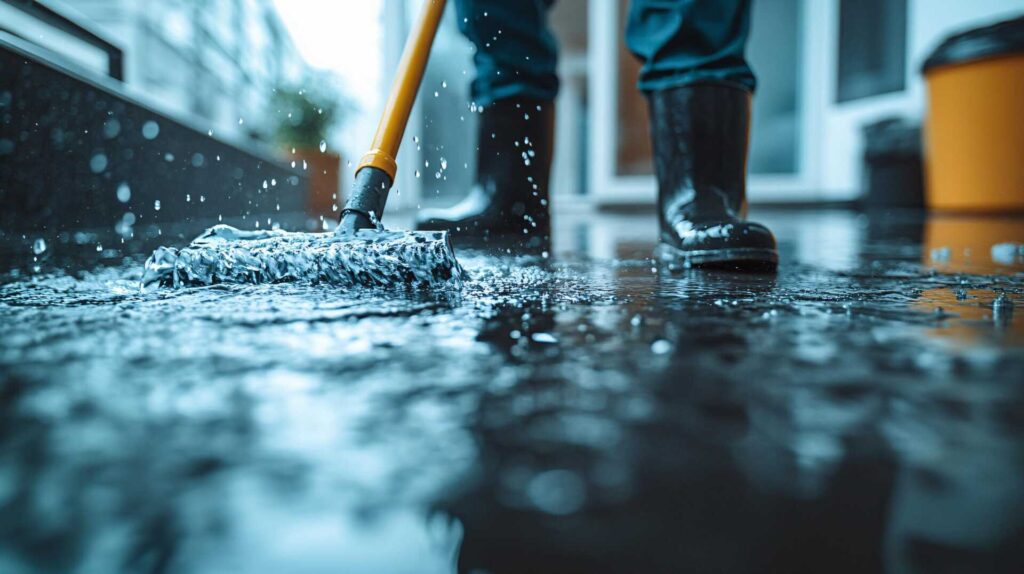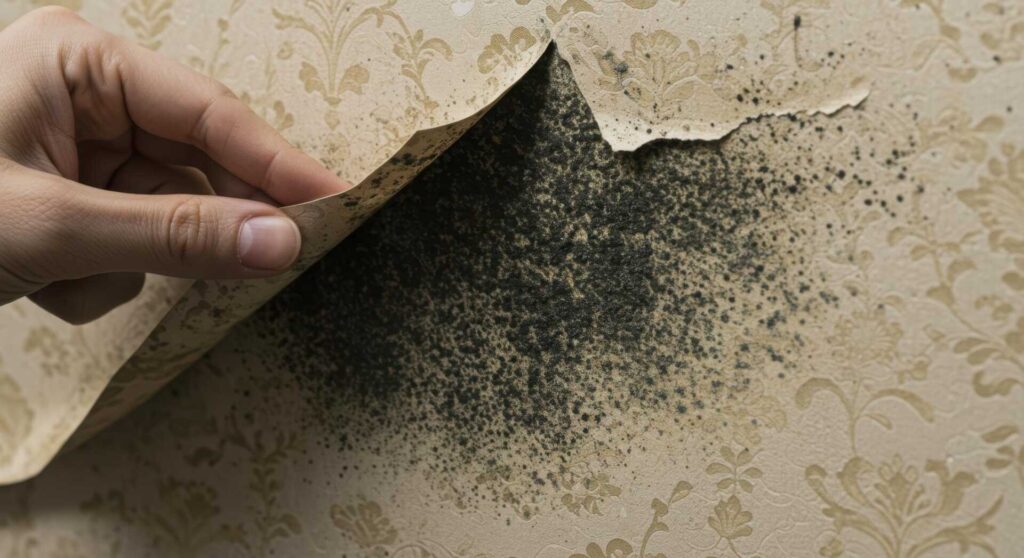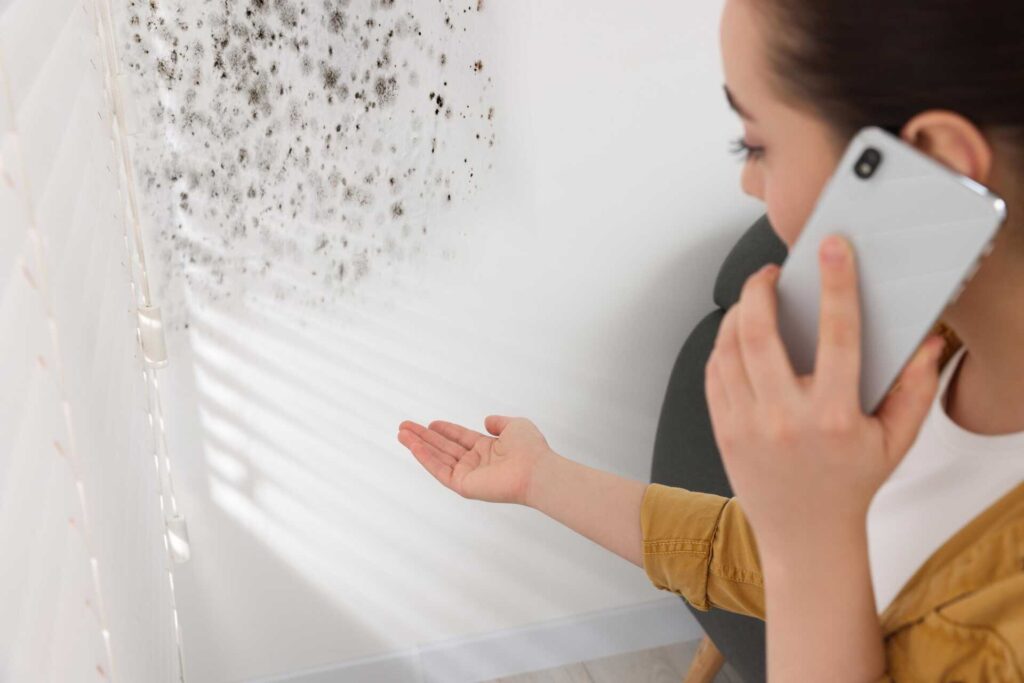
Contents
When faced with water damage in your home, knowing how to respond quickly and effectively can make all the difference. You’ll want to assess the damage first, which sets the stage for the entire repair process. After that, employing emergency water removal techniques can minimize further issues. Understanding the next steps in drying, mold remediation, and repair will be vital. Let’s explore these essential techniques to ensure your home stays safe and sound.
Key Takeaways
- Inspect and assess damage thoroughly, documenting findings for insurance claims and identifying areas needing repair.
- Remove standing water promptly using mops, wet/dry vacuums, or submersible pumps to minimize damage.
- Dry affected areas effectively with high-powered fans and dehumidifiers, maintaining humidity levels between 30-60%.
- Clean and remediate mold using appropriate protective gear, scrubbing small patches, or using HEPA vacuums for larger infestations.
- Repair damaged structures by replacing compromised materials and applying waterproof sealants and mold-resistant paint.
Assessing the Extent of Water Damage
How do you determine the extent of water damage in your home? Start by inspecting visible areas like walls, ceilings, and floors for discoloration, warping, or bubbling paint.
Pay close attention to corners and hidden spaces, as water often accumulates in these spots. Use a moisture meter to check the moisture levels in materials; anything above 15% indicates significant damage.
Next, examine your belongings. Check furniture, carpets, and personal items for dampness or mold. If you notice a musty smell, it’s a sign that water’s been lingering too long.
Don’t forget to assess your home’s foundation and basement, as these areas are prone to water intrusion.
Document your findings with photos and notes; this’ll be helpful for insurance claims. By thoroughly evaluating these areas, you’ll gain a clearer picture of the damage and what steps to take next.
Emergency Water Removal Techniques
When faced with water damage, prompt action is essential for minimizing destruction and preventing mold growth. Start by turning off the electricity in the affected area to ensure safety.
Next, use mops, towels, or a wet/dry vacuum to remove standing water. If the water level is significant, consider renting a submersible pump to expedite the process. Focus on removing the water as quickly as possible; even small amounts can lead to bigger problems if left unattended.
Once you’ve extracted the bulk of the water, check for hidden pockets in walls or under flooring. Open windows and doors to enhance airflow, which can help with the drying process.
If you’re dealing with contaminated water, wear protective gear like gloves and masks. Remember, your swift response can make a huge difference in preventing further damage and restoring your home to a safe environment.
You’ve got this!
Drying and Dehumidification Methods
As water damage lingers, efficient drying and dehumidification become essential to preventing mold growth and structural issues.
Start by using high-powered fans to circulate air and speed up the drying process. Position them strategically to cover wet areas thoroughly.
Next, consider renting or purchasing a dehumidifier. This appliance pulls moisture from the air, helping to lower humidity levels and dry out materials like drywall and wood.
Don’t forget to monitor humidity levels using a hygrometer; aim for 30-60% for ideal drying conditions.
For more extensive damage, you might need to remove carpets and flooring to ensure everything dries completely.
Remember to keep windows and doors closed to maintain controlled conditions.
Check for hidden pockets of moisture, especially in walls and ceilings, and address those areas promptly.
Mold Remediation Strategies
Addressing mold growth promptly is essential to restoring a safe living environment after water damage. Start by identifying affected areas, typically damp or dark spots. Use a moisture meter to ensure you catch hidden mold.
Once you’ve located the mold, wear protective gear—gloves, mask, and goggles—to safeguard your health. For small patches, scrub with a mixture of water and detergent or a commercial mold remover. Rinse and dry the area thoroughly.
For larger infestations, you might need to seal off the area and use a HEPA vacuum to remove spores. If the mold persists, consider hiring a professional remediation service, especially if it affects structural materials.
Finally, prevent future growth by controlling humidity levels in your home. Keep air circulating, fix leaks promptly, and use dehumidifiers in high-moisture areas.
Taking these steps ensures a healthier space for you and your loved ones.
Repairing and Restoring Affected Areas
After dealing with mold, it’s crucial to focus on repairing and restoring the affected areas to prevent further issues.
Start by evaluating the damage; check for warped flooring, stained walls, or compromised insulation. Once you’ve identified the areas needing repair, remove any damaged materials—this might include drywall, baseboards, or flooring. Don’t forget to replace the insulation if it has been soaked.
Next, verify everything is thoroughly dried before moving forward. Use fans or dehumidifiers to eliminate lingering moisture.
When it’s dry, you can patch up walls with fresh drywall and use waterproof sealants where necessary. For flooring repairs, consider matching new materials with your existing decor for a seamless look.
Finally, repaint the walls with mold-resistant paint to help safeguard against future issues.
Recap
In the battle against water damage, remember the wisdom of the old adage: “An ounce of prevention is worth a pound of cure.” By promptly evaluating the damage, removing water, and ensuring thorough drying, you fix the immediate problem and safeguard your home against future issues. Embrace these techniques as your shield, and you’ll restore your space while keeping mold and moisture at bay. Your proactive efforts today will pay off in a healthier, more resilient home tomorrow.

